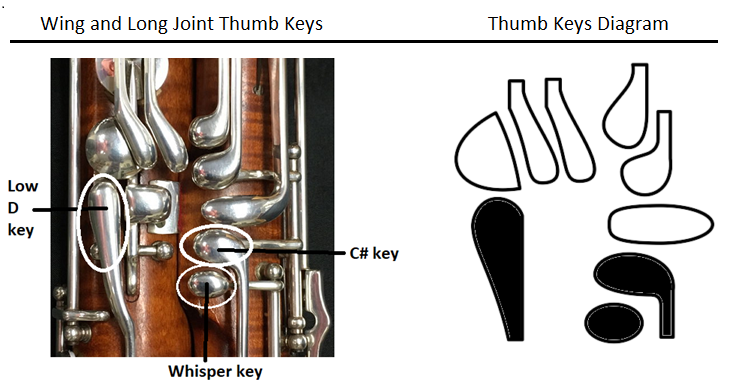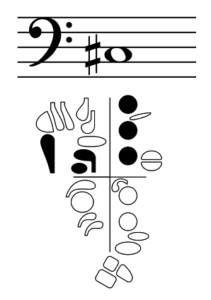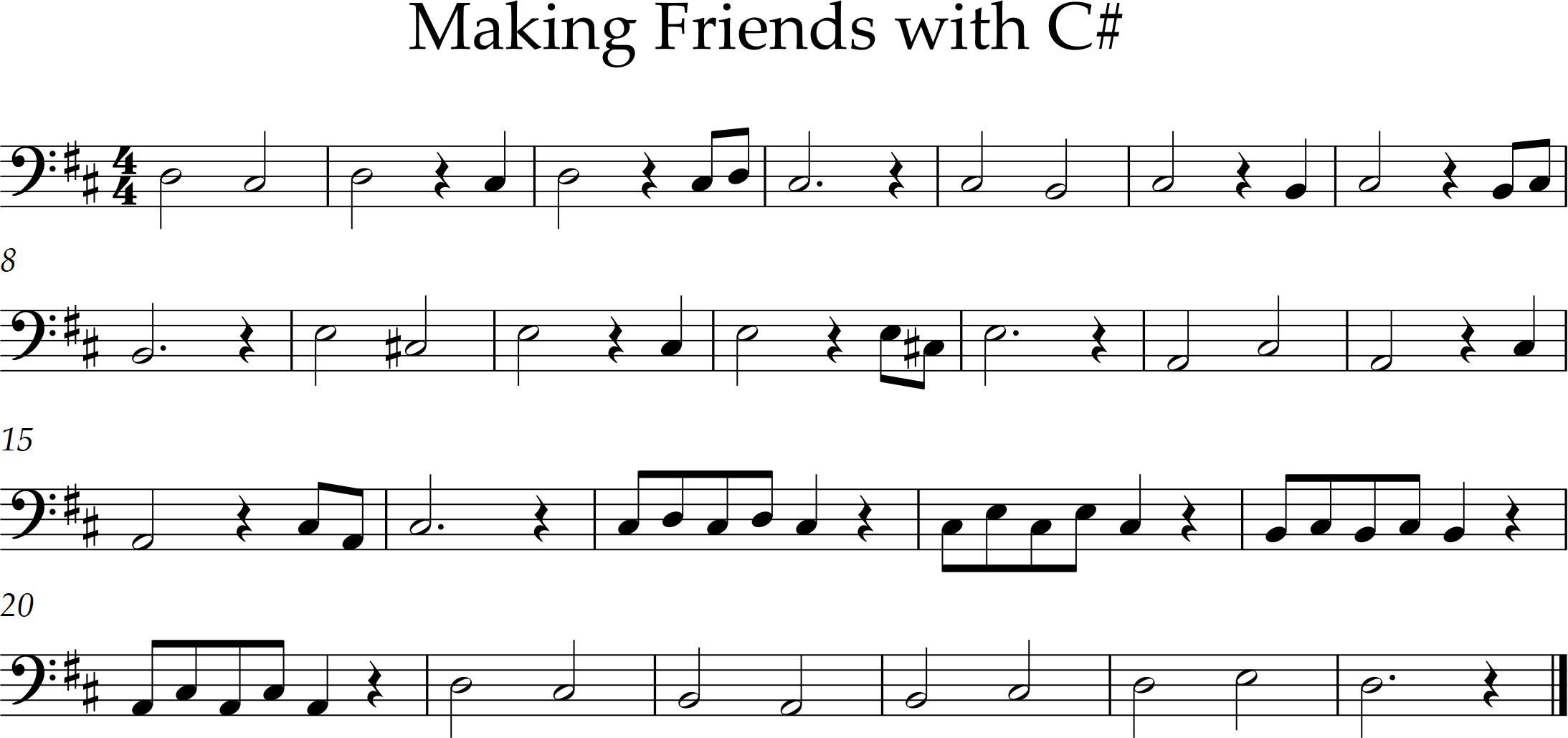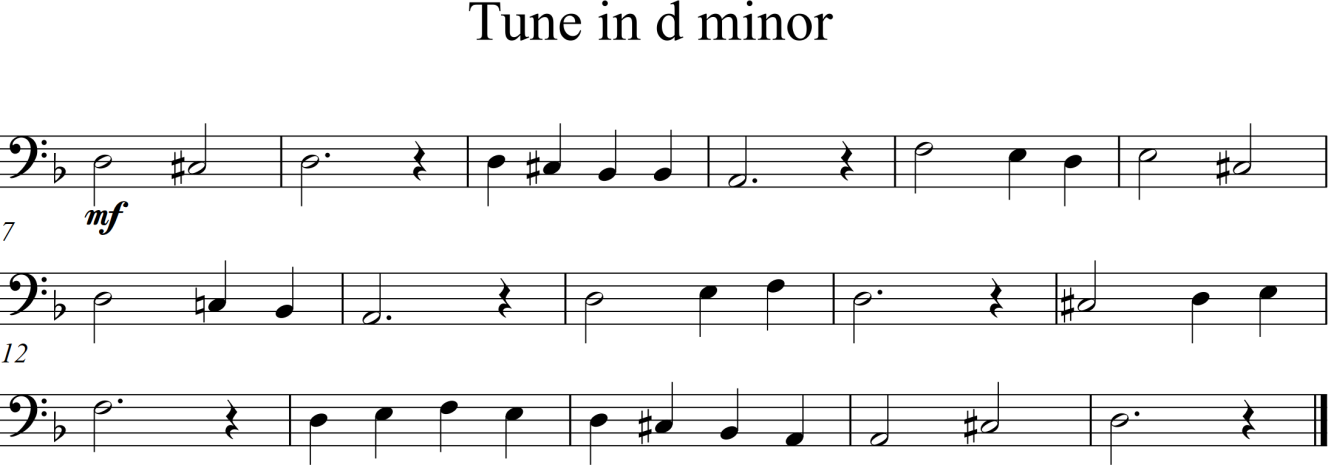C-sharp and Low D keys
This note requires coordination in your left thumb. You must press the low D key, whisper key, and C# keys at the same time. These thumb keys are located on the wing and long joints. The three tone-holes on the front of the wing are also covered for middle C-sharp.

Middle C# Fingering

Tip:
This fingering is a handful and can create tension in your hand as you practice playing C-sharp. Pay attention to your body and take short breaks to relax your back, shoulder, arm, hand, and fingers as you add this note to your technique.
- Keep the tip end of your left thumb on the whisper key.
- Roll your thumb up to add the C# key by rotating your left wrist a little. Use the upper edge or side of your thumb to press the C# key.
- At the same time, allow your thumb’s knuckle to relax and flatten to press the low D key. *Make sure it goes all the way down.
- There is no need to squeeze when pressing these keys so keep your left hand as relaxed as possible as you work on this exercise.
If your hand gets a cramp, hold the bassoon with your right hand and lower your left arm down by your side. Shake your hand and fingers gently until they feel more relaxed. Practice this combination for only a few minutes at a time to avoid stressing your left thumb and hand.
Matching Pitch on C#
Play this with an octave drone on C#. Once that feels comfortable, try it with a perfect fifth drone on C#-G#.

Making Friends with C#
This exercise goes back and forth between C-sharp and its closest neighbors on the staff. Play this slowly and focus on keeping your hands and fingers relaxed and coordinated.

Mary Had a Little Lamb
This is a simple and familiar tune. Concentrate on:
- keeping your thumb and hand soft and relaxed,
- holding the whisper key down for the entire tune (avoid lifting it when rolling up to c# key),
- rolling/pivoting your thumb upward so the top edge presses the C# key,
- allow the knuckle in the middle of your thumb to flatten (collapse) to press the low D key as you roll up to also press the C# key.

Tune in D minor
Tune in D minor might seem confusing because it has both a Bb and a C#. The Bb is in the key signature and the C# creates a half-step below D to make D sound like home. It’s called a leading tone. Notice how the D sounds like you’ve come back home at the end of the tune.




Feedback/Errata